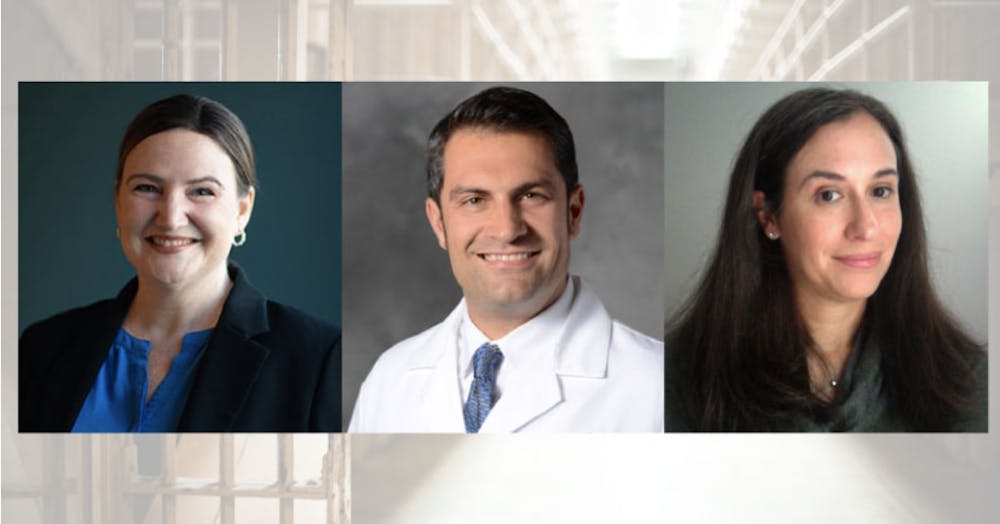Content warning: This article includes mentions of suicide, suicidal ideation and mental health disorders.
A team that includes Brown researchers was with a $15 million grant from the National Institute of Mental Health in late September to establish a national suicide prevention center. Implementation of the center began earlier this month.
The National Center for Health and Justice Integration for Suicide Prevention’s objective is to utilize current infrastructure in the criminal justice system to identify individuals with suicide risk factors and connect them with care, said Lauren Weinstock, professor of psychiatry and human behavior and one of the three principal investigators for the center.
The center itself will not have a single location, instead operating through different projects nationwide, including in Massachusetts, Ohio, Minnesota and Michigan, according to .
Weinstock noted that Medicaid claims data from Ohio will be the basis of the center’s early work.
With a background in clinical psychology, Weinstock’s research focuses on assisting at-risk populations when they are at their most vulnerable, she said — including those in the criminal justice system. She emphasized that incarcerated individuals are “at disproportionate risk by virtue of the fact that they present with so many of the known risk factors for suicide.”
The center seeks to use big data analytics and artificial intelligence to more effectively identify individuals at high-risk for suicide within the criminal justice system to allow for earlier interventions and cohesive plans of care for incarcerated people, Weinstock said.
Jennifer Johnson, professor of public health at Michigan State University and another principal investigator, hopes that their algorithm will also “alert mental health providers” when their patients “end up in jail.” The center strives to create increased interactions between caregivers and their patients in an effort to reduce suicide attempts, she explained.
Johnson told The Herald that in previous research she identified those transitioning within jails and detention centers as “at-risk” for suicide as they are most likely to “fall through the cracks” of effective psychological care.
With their third investigator, Brian Ahmedani of Henry Ford Health in Detroit, Mich., as well as partnerships with colleagues around the U.S., the researchers began to implement their plans in early October.
Michael Armey, associate professor of psychiatry and human behavior, praised the team for their work. He said that as an associate director of the , he has seen how the infrastructure of the criminal justice system can be utilized to treat patients.
“This is a wonderful project. It’s really needed. The emphasis on qualities and disparities … is well overdue,” he said. “I think this project is only a tiny part of what probably needs to be done in the long run.”
As for the future of the center, Johnson and Weinstock communicated their emphasis on the scalability of these initiatives as “low-cost, high-impact.” As they collect results from their research, they hope to expand these interventions nationwide.
“We will learn from the research to know what might inform best practices for suicide prevention in a particularly vulnerable group of people who have typically not been included in suicide prevention research to date,” Weinstock said.
“We are finding people at-risk at a very risky point in their lives,” Johnson said. “They are ones who are stigmatized, marginalized by society, often at the fringes. Folks coming into contact (with the justice system) tend to get ‘othered.’ It is people you know, it is your friends and family. I think we found a way to reach them.”

Owen Dahlkamp is a Section Editor overseeing coverage for University News and Science & Research. Hailing from San Diego, CA, he is concentrating in political science and cognitive neuroscience with an interest in data analytics. In his free time, you can find him making spreadsheets at Dave’s Coffee.




